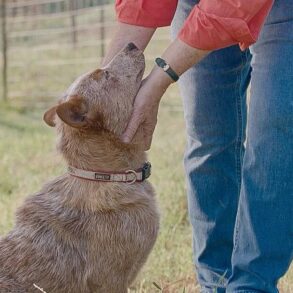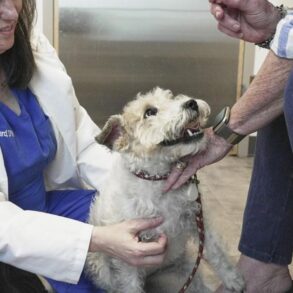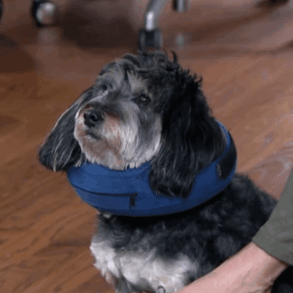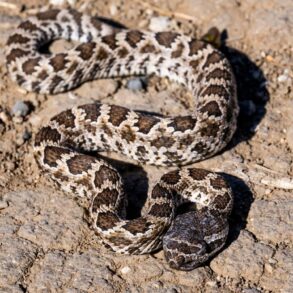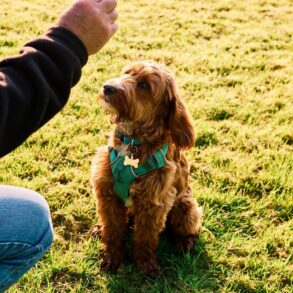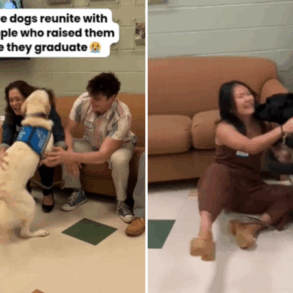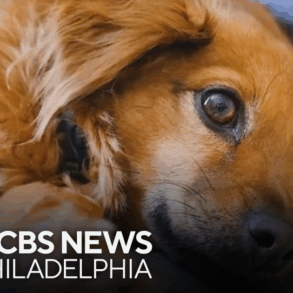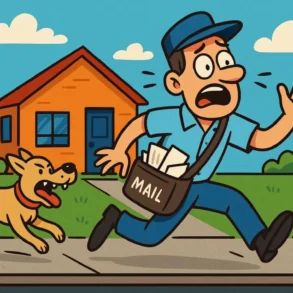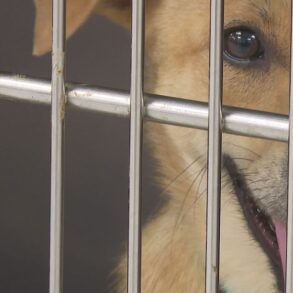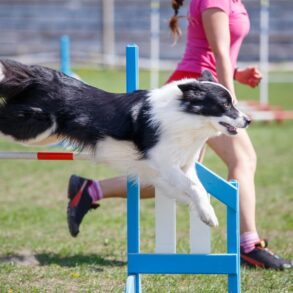Dogs have a variety of facial movements that often go unnoticed. One of the most subtle, a simple blink, might carry more meaning than we realize.
Scientists have wondered whether this small eye movement plays a hidden role in how dogs connect. That curiosity deepened with new research, as a team discovered something intriguing about the way dogs blink at each other.
Dogs blink after seeing other dogs blink
A research team led by life scientist Chiara Canori at the University of Parma filmed several canines while blinking, licking their noses, or while simply staring at the camera.
The experts showed these clips to 54 test dogs, then tracked how often those dogs blinked in return. They also attached heart monitors to track each dog’s heart rate variability, a measure of how the heart adjusts beat to beat.
The test dogs who stayed awake ended up blinking about 16% more often when watching blinking dogs than when they watched the other clips. The researchers suspect that this could hint at a form of facial mimicry, which includes matching a partner’s yawns, facial expressions, or slight movements.
In past human studies, people who see another person blink may do the same thing. This might be unplanned, yet it seems to build connections in subtle, social ways.
Subtle movements and social bonding
Blink-related social behavior isn’t just seen in dogs. Studies have shown that non-human primates like macaques adjust their blinking based on social interactions, suggesting an evolutionary link to group dynamics.
Even animals like cats and horses use slow blinks or softened eyes as signs of trust or emotional safety. These subtle movements often appear in bonding moments and might help keep peace in social groups.
Videos of dogs licking their noses did not lead to a rise in that same action. The team notes that nose licking can mean a few things, including signs of frustration or eagerness, so they were curious to test it.
Although it is often called an appeasement signal, the dogs in this study seemed less influenced by it. They did reveal more sclera (the white part of the eye) when watching that clip, which could have hinted at discomfort.
Blinking didn’t stress dogs
The heart data did not shift in any big way during the blinking, nose-licking, or still videos. In general, the dogs stayed calm, suggesting these short facial cues did not crank up stress.
There was a gentle increase in relaxation indicators right after the videos ended. This pattern implies that watching another dog’s face, even when it blinks or licks, is not inherently tense for a typical pet dog.
Researchers have suggested that blinking might be tied to emotional states in animals, not just communication. In humans, blink rates often rise during conversation or when people are processing emotional content.
Dogs may be doing something similar. A small spike in blinking could reflect emotional awareness, signaling calmness, curiosity, or mild stress, depending on the setting.
Understanding dogs through blink patterns
Some dog trainers encourage eye contact, but rarely focus on blinking cues. Knowing more about how dogs notice a peer’s blink might affect everything from socialization classes to shelter assessments.
Canori’s group thinks future work should look at how dogs time these blinks during face-to-face play. Researchers also wonder if blinking back at a dog might encourage a peaceful tone in group settings.
Most pet owners wouldn’t think twice about their dog blinking. But if blinking plays a role in connection, then ignoring it might mean missing out on a key piece of communication.
Being aware of these subtle cues can change how owners understand their dog’s emotional state. A blink might show that a dog is calm, receptive, or simply mirroring a social moment.
Future research directions
This work raises new questions about what else dogs pick up from each other’s faces. Fine-tuning the science on blinking, yawning, and other subtle signals might help us read our furry companions even better.
Even though dogs cannot put these experiences into words, their bodies share plenty of hints about what’s going on inside their heads. Blink patterns could be another piece of the puzzle we have only just recognized.
Since the dogs observed for the study watched videos rather than interacting in person, it’s unclear if real-life blinking would produce the same response. Follow-up studies could test dogs in natural settings to see if blinking works the same face-to-face.
The study is published in Royal Society Open Science.
—–
Like what you read? Subscribe to our newsletter for engaging articles, exclusive content, and the latest updates.
Check us out on EarthSnap, a free app brought to you by Eric Ralls and Earth.com.
—–
This post was originally published on this site be sure to check out more of their content.







